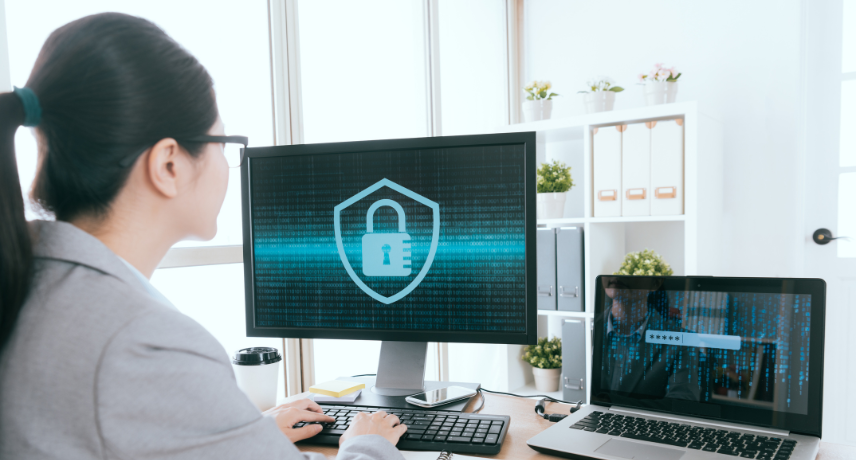
Enquiry Form
8 Essential Features to Look for in Security Management Software
Choosing effective security management software for your corporation has become critical with the rapid increase in cyberattacks and data breaches. In a world with an overabundance of security tools available, identifying key features that actually protect sensitive information and IT infrastructure, both from internal and external threats, is imperative.
In this blog post, we focus on the eight essential features to be included in security management software to ensure compliance and security in a corporation.
1. Real-Time Monitoring and Instant Alerts
A robust solution requires real-time monitoring capabilities. This includes providing continuous surveillance of your systems, networks, and data so any detected abnormal activities or breaches can be rectified. Real-time alerts equip you to be able to take action, whether it be damage control or preemptive action.
Alert Types
Good software sends notifications through different channels (SMS, email, in-app alerts) according to the severity of the issue. Customizing alert levels for critical threats ensures they are escalated to the right personnel immediately, whereas lower priority issues aren’t logged without any disruption.
2. Advanced Threat Detection and Automated Response
Modern security management software now uses behavior analysis, artificial intelligence, and machine learning to discover potential threats. It is important that the system recognize things like lots of failed logins or an overload of data, which are signs of attempts to access the network by brute force or malware.
Automation Saves Time
The software subsystems have the ability to automatically execute responses to threats. IP addresses can be blocked, infected systems can be contained, and compromised user accounts may get deactivated without manual intervention. Rapid execution of these steps enhances overall performance and minimizes breach damage.
3. Comprehensive Incident Management
Cybersecurity constantly faces issues, despite how advanced its setup is. That is why you need your software to feature complete incident management tools. Some of the tasks are to document, monitor, and address security incidents according to a procedure.
Predefined Response Plans
The leading security management software includes ready-made or adjustable procedures for handling incidents. Such plans make sure that if a breach occurs, certain actions are taken, such as warning stakeholders, limiting system access, and restoring data from backups.
4. Access Control and User Authentication
Access control in your organization must be handled with care. Special security barriers, such as MFA and biometric checks, stop anyone who is not authorized from accessing your systems.
Managing User Privileges
A reliable system helps administrators assign and control user access rights according to employees’ roles or departments. If someone is moved to a new position or transferred, access can be changed automatically. Immediate notifications should appear whenever a suspicious privilege escalation is found to prevent backdoor access.
5. Compliance and Regulatory Management
A lot of industries have to strictly comply with rules for data protection such as GDPR, HIPAA, and ISO/IEC 27001. A good security system will help with compliance by recording transactions, securing data, and describing clear steps for handling user data.
Automated Reporting
With built-in compliance tools, you can produce audit reports, record who has accessed your data, and make sure your data is protected as per industry guidelines. When these reports are automated, there is less manual effort and better odds of succeeding at an external security audit.
6. System Integration and API Support
To work best, your security management software must be able to integrate with your existing technology, including cloud, email, endpoint, and HR services.
Custom API Integrations Many modern platforms give you the option to access their APIs and design custom integrations. By linking your security system and HR system, changes in employee access will happen without additional effort when a person joins or exits the company.
7. Scalability and Future-Proof Flexibility
When your organization expands, the security system should also be updated. Whatever changes you make in your workforce, like adding new offices or remote workers, your security management system needs to keep up without any delays.
Evolving with the Threat Landscape
You should also make sure you are flexible. Since threats change all the time, your software must also keep evolving. Select a provider that gives regular updates, shares intelligence on current cyber threats, and supports flexible configurations to meet new types of attacks and risks.
8. User-Friendly Interface and Training Support
A security system works only when its users participate. Should your staff find the system hard to use, mistakes and setbacks will happen. This is why a system that is easy to use and has clean dashboards and simple navigation is necessary.
Built-in Training and Support
The most reliable platforms include video tutorials, chat assistance, and onboarding manuals. Having quick and efficient support is necessary, especially when there is a major issue that needs attention fast.
Conclusion:
It is essential to use the right security management software nowadays to maintain your assets and keep your organization trustworthy. Making these eight important features part of your system—like real-time monitoring and easy scalability—helps secure your long-term safety.
Choosing the suitable platform both prevents current challenges and helps your business deal with future threats. Make sure security plays a key role in all your operations, and you will stay ahead of any risks.